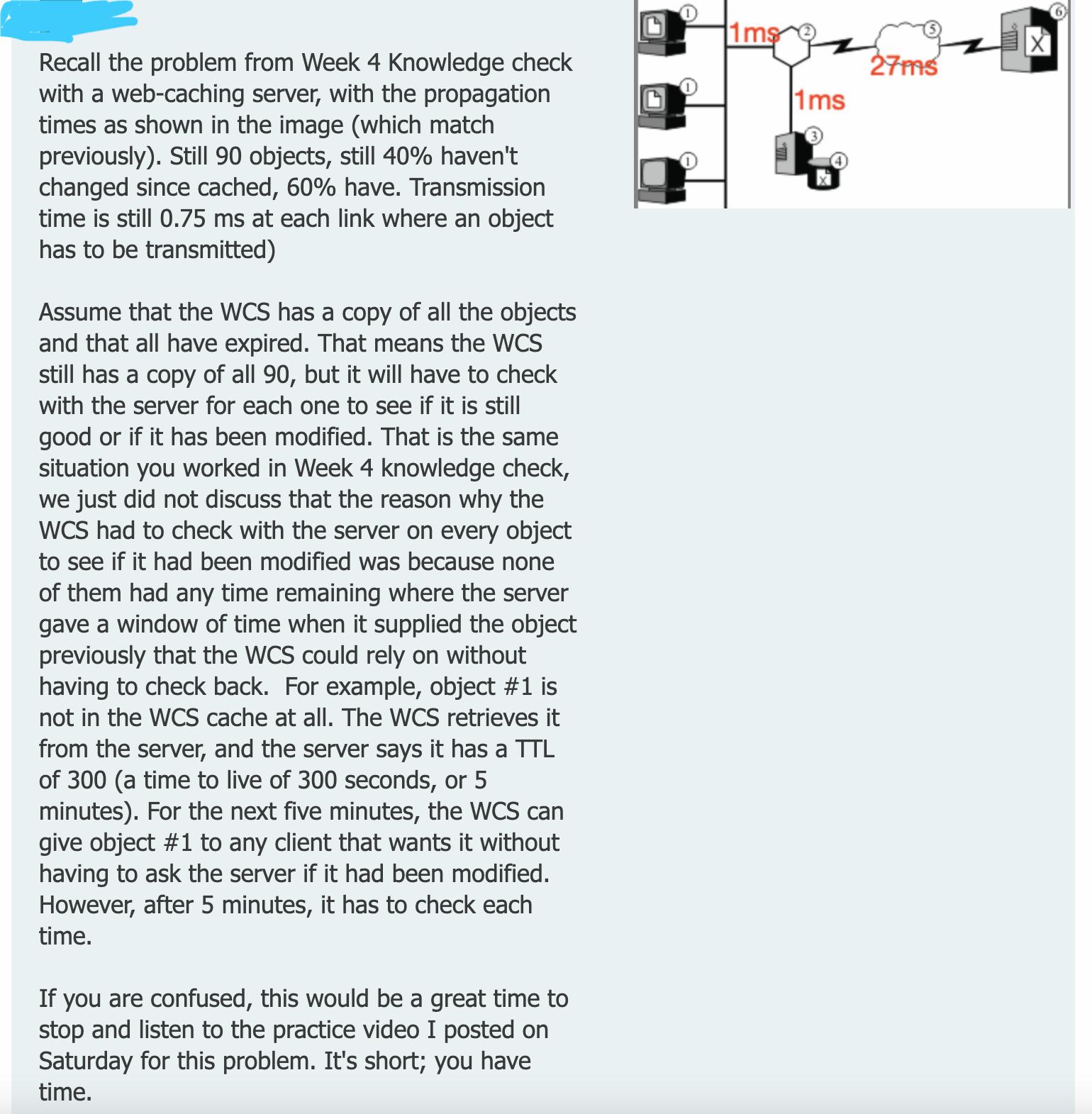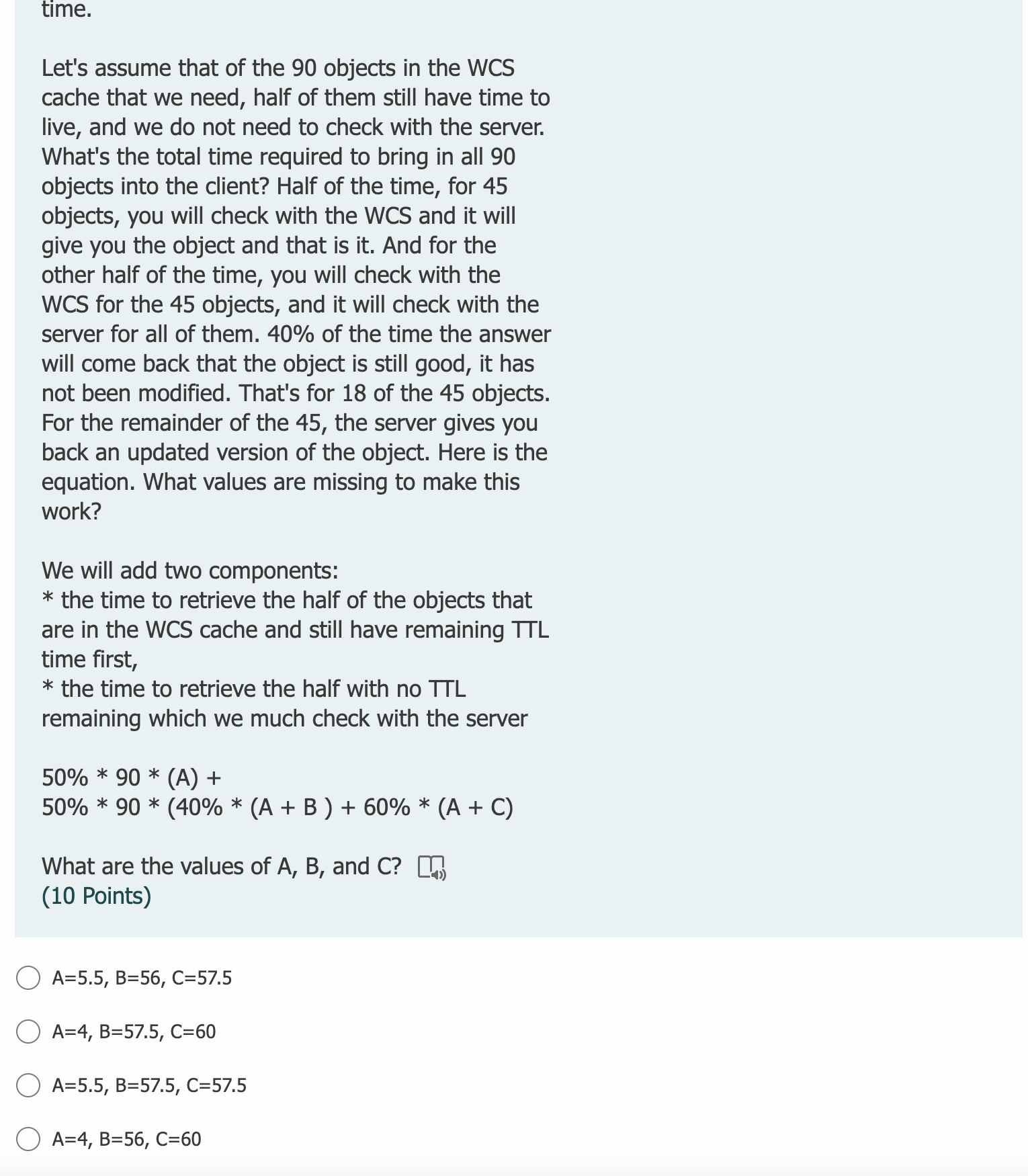Answered step by step
Verified Expert Solution
Question
1 Approved Answer
Recall the problem from Week 4 Knowledge check with a web-caching server, with the propagation times as shown in the image (which match previously).


Recall the problem from Week 4 Knowledge check with a web-caching server, with the propagation times as shown in the image (which match previously). Still 90 objects, still 40% haven't changed since cached, 60% have. Transmission time is still 0.75 ms at each link where an object has to be transmitted) Assume that the WCS has a copy of all the objects and that all have expired. That means the WCS still has a copy of all 90, but it will have to check with the server for each one to see if it is still good or if it has been modified. That is the same situation you worked in Week 4 knowledge check, we just did not discuss that the reason why the WCS had to check with the server on every object to see if it had been modified was because none of them had any time remaining where the server gave a window of time when it supplied the object previously that the WCS could rely on without having to check back. For example, object #1 is not in the WCS cache at all. The WCS retrieves it from the server, and the server says it has a TTL of 300 (a time to live of 300 seconds, or 5 minutes). For the next five minutes, the WCS can give object #1 to any client that wants it without having to ask the server if it had been modified. However, after 5 minutes, it has to check each time. If you are confused, this would be a great time to stop and listen to the practice video I posted on Saturday for this problem. It's short; you have time. 1ms 1ms 27ms X time. Let's assume that of the 90 objects in the WCS cache that we need, half of them still have time to live, and we do not need to check with the server. What's the total time required to bring in all 90 objects into the client? Half of the time, for 45 objects, you will check with the WCS and it will give you the object and that is it. And for the other half of the time, you will check with the WCS for the 45 objects, and it will check with the server for all of them. 40% of the time the answer will come back that the object is still good, it has not been modified. That's for 18 of the 45 objects. For the remainder of the 45, the server gives you back an updated version of the object. Here is the equation. What values are missing to make this work? We will add two components: * the time to retrieve the half of the objects that are in the WCS cache and still have remaining TTL time first, * the time to retrieve the half with no TTL remaining which we much check with the server 50% * 90 * (A) + 50% * 90 * (40%* (A + B ) + 60% * (A + C) What are the values of A, B, and C? (10 Points) A=5.5, B=56, C=57.5 O A=4, B=57.5, C=60 O A=5.5, B=57.5, C=57.5 A=4, B=56, C=60
Step by Step Solution
There are 3 Steps involved in it
Step: 1

Get Instant Access to Expert-Tailored Solutions
See step-by-step solutions with expert insights and AI powered tools for academic success
Step: 2

Step: 3

Ace Your Homework with AI
Get the answers you need in no time with our AI-driven, step-by-step assistance
Get Started


